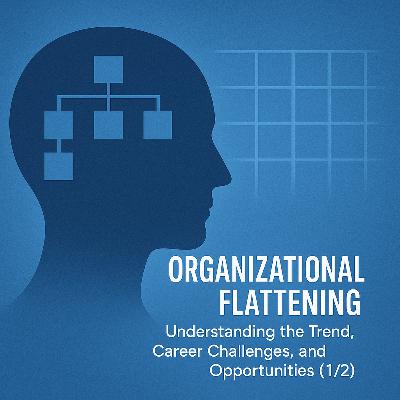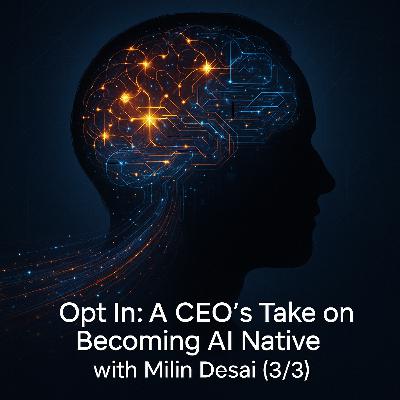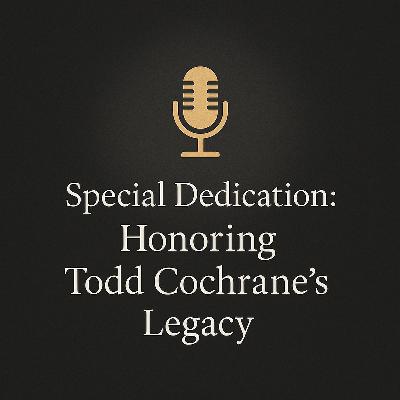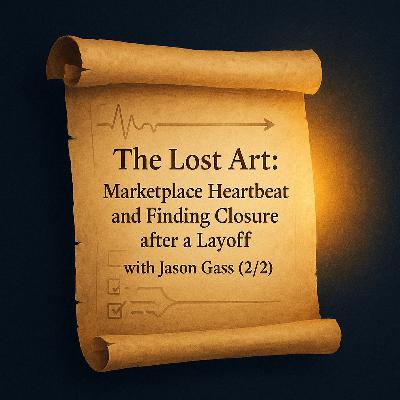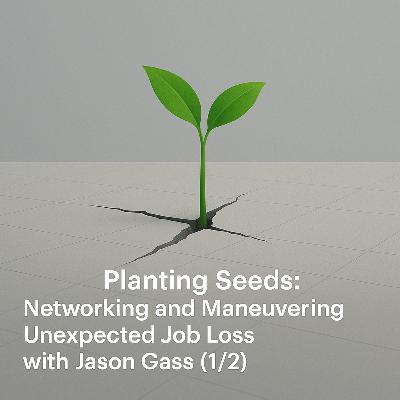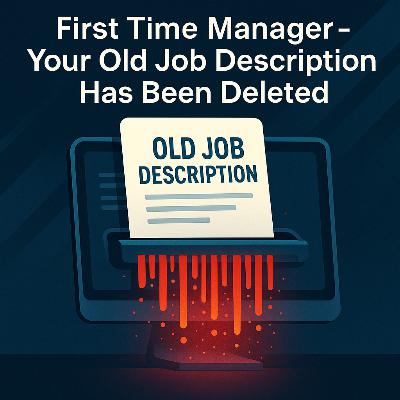Organizational Flattening: Understanding the Trend, Career Challenges, and Opportunities (1/2)
Description
What happens when layoffs lead to organizational flattening, fewer managers, and larger teams? It’s a trend we’re seeing in the tech industry at large right now impacting team dynamics and career paths. To understand what’s really happening and the overall impact, we pulled in former guests Abby Clobridge, Shailvi Wakhlu, and Leanne Elliott in a roundtable format.
In episode 347, we explore the trend and the unique challenges it presents to consulting firms, managers, and individual contributors working with and inside flatter organizations. Listen closely for the impact to job levels, what this means for top-tier individual contributors, how companies are thinking about knowledge management, employee loneliness and wellbeing, and where some unexpected opportunities lie for those willing to step up.
Original Recording Date: 09-27-2025
Topics – Framing Our Discussion and a Slightly Different Format, Defining the Trend, Impact on Career Structure and Ambiguity, The Challenge of Reaching Top Tier Positions, Internal Risk and Potential Loss of Knowledge, Strains on Execution, Impact to Team Dynamics, From Problem to Opportunity
1:01 – Framing Our Discussion and a Slightly Different Format
- For today and in next week’s episode, rather than introducing a guest to share their career story and lessons learned, we’re trying something a little different.
- Recently we sent a follow up question to a former guest whose response sparked an idea for this format.
- The trend of organizational flattening in our industry has been top of mind for us. We’re seeing the continued layoffs in tech often times result in fewer management layers and an increase in the number of people reporting to a single manager.
- This topic is too big and has too many angles for a single conversation. We wanted to bring together multiple expert perspectives on this issue in a single episode. We’ve reached out to a handful of former guests and sent them specific questions on this topic. Those guests were kind enough to record their answers and send them back to us.
- Consider this a Nerd Journey roundtable or collection of hot takes from trusted voices. Our goal is to amplify their advice and provide a diverse set of strategies for navigating this landscape.
- In the first episode (this week), we explore the trend of flatter organizations and the consequences for your career path and team culture. Next week in part 2 we will focus on actionable insights for thriving in this environment.
- Here’s the full set of episode links we will share throughout the conversation if you would like to hear more from one of the former guests who participated:
- Abby Clobridge
- Episode 292 – Library Science: Information Architecture and the Synthesis of Details with Abby Clobridge (1/2)
- Episode 293 – Enterprise Knowledge Management: A Consultative Approach to Solving the Right Problems with Abby Clobridge (2/2)
- Shailvi Wakhlu
- Episode 210 – A Collection of Ambiguous Experiments with Shailvi Wakhlu (1/2)
- Episode 211 – Structure the Levels of Contribution with Shailvi Wakhlu (2/2)
- Self-Advocacy: Your Guide to Getting What You Deserve at Work by Shailvi Wakhlu
- A special 15% off link for Nerd Journey listeners to Shailvi’s self-advocacy course can be found here.
- Leanne Elliott
- Episode 237 – The Psychological Transition of Layoffs with Leanne Elliott (1/2)
- Episode 238 – Managers as Culture Keepers with Leanne Elliott (2/2)
- Episode 340 – Task Cohesion: Managing a Larger Team in a Flatter Organization amidst a Climate of Uncertainty with Al and Leanne Elliott (1/2)
- Episode 341 – Champion Your People: Role Clarity for the IC in the Chaotic World of Work with Al and Leanne Elliott (2/2)
- Subscribe to the Truth, Lies and Work Podcast
- Abby Clobridge
2:48 – Defining the Trend
- Abby Clobridge is the founder and principal consultant at FireOak Strategies and has deep expertise in the realm of knowledge management. Abby was a guest in episodes 292 and 293. We wanted to get an outside perspective from someone who works with many different organizations on various projects.
Our question for Abby:
- Within your customer base and set of prospects, do you see companies currently doing organizational flattening of management layers with an increased number of direct reports for managers? And if you have seen it, what do you think is the reason for this? We’ve heard of 20 or more people under a single people manager.
- Several of Abby’s clients are going through huge changes, sometimes resulting in entire teams and departments (like IT) being eliminated. In some cases, IT work is being shifted to MSPs (managed service providers), which has pros and cons.
- According to Abby, the economic climate and the rise of AI adoption has made this year tumultuous for everyone.
- Abby is seeing companies put more and more people under a single people manager.
- She tells us that managers with extremely large teams have no way to build real relationships. The large team often results in employees not being able to rely on their manager for much from day to day.
- “That kind of dynamic is a recipe for cultural toxicity really quickly too.” – Abby Clobridge
4:25 – Impact on Career Structure and Ambiguity
- Shailvi Wakhlu is a leadership speaker and data consultant with experience building and leading large organizations, including structuring of job levels for career paths. We spoke to her in episodes 210 and 211 She’s also the author of Self-Advocacy: Your Guide to Getting What You Deserve at Work.
Our question for Shailvi:
- In our previous conversation we talked a lot about job levels. Do you think flatter organizations make it more difficult to clearly define those job levels, or are big companies that are cutting head count to flatten even thinking about this? What do you wish these companies would consider?
- “The stated reason that companies move towards flatter organizations, I think, is because they want to get rid of hierarchy. They want to say…we don’t want the lack of a higher title to restrict you from having a greater impact on the company. And I think that’s a fair goal…. However, I think in reality how it actually ends up playing out is, one, when you have a very flat organization…people don’t know what will be rewarded. And two, there is a lot of ambiguity about what everyone’s job is…. If everyone is responsible for something, typically no one is responsible for something.” – Shailvi Wakhlu
- It makes sense that a company would want people at all levels to feel empowered to contribute.
- Accountability comes through making distinctions in roles. Shailvi gives the example of senior engineers being expected to be more on top of certain things, and the same expectation would then not apply to junior engineers.
- People are thinking about the kind of contributions that would be rewarded within an organization as well as how to grow their career. Typically, titles are used to acknowledge the level of contributions an employee has made. Moving from one well-defined job level to another gives a person a sense of progress and something to aim for.
- “So, if there is not that definition of what is expected at each level, some people…may not have the tools to figure out what they should aim for…. Instead, I think the reason people started defining job levels was so that you could anchor on outcomes and impact.” – Shailvi Wakhlu
- Years ago

